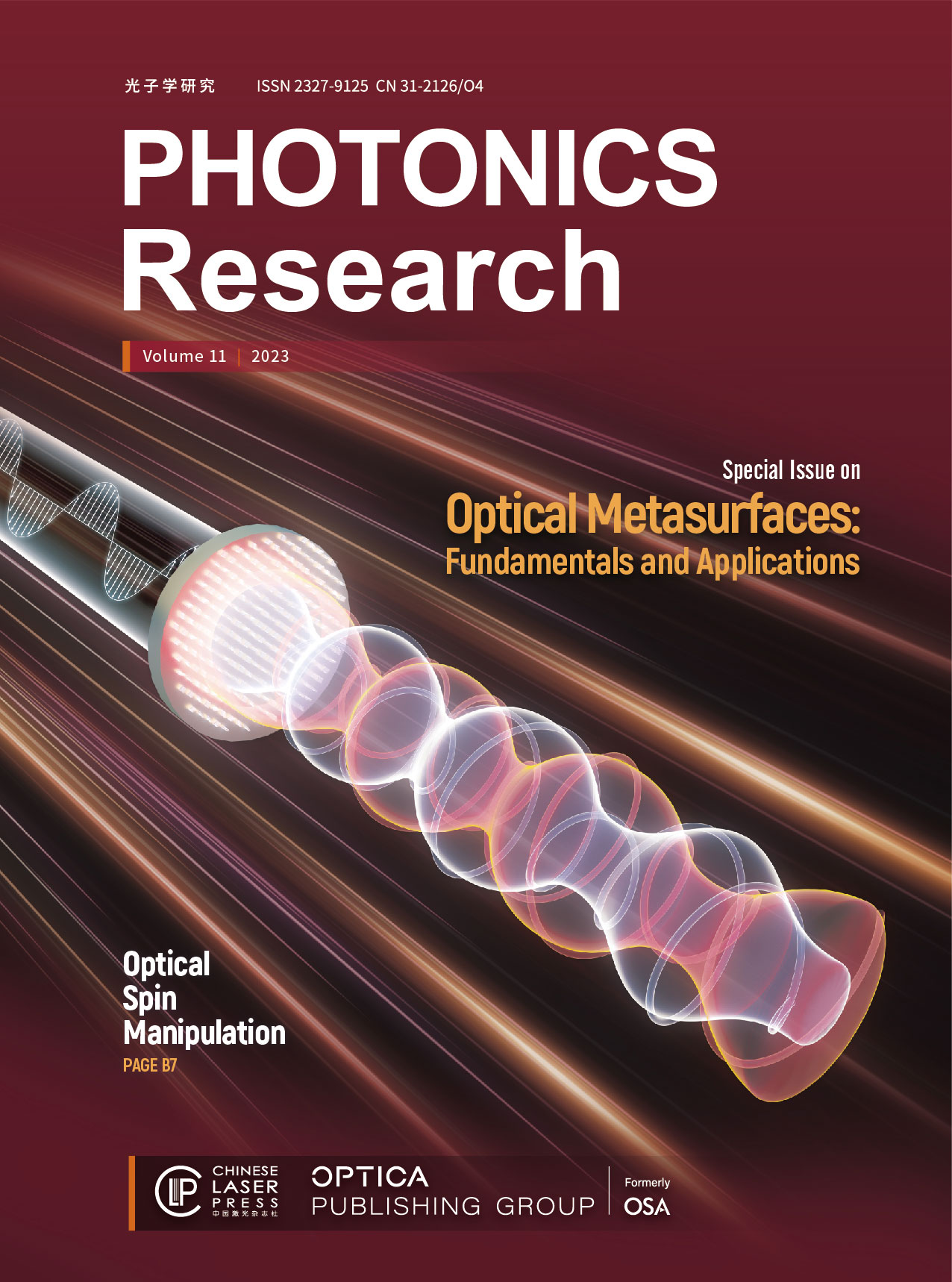来自手性金属有机框架的圆偏振激光
IF 7.2
1区 物理与天体物理
Q1 OPTICS
引用次数: 0
摘要
圆偏振激光器在经典光学、纳米光子学和量子光学信息处理中发挥着举足轻重的作用,但其制造过程仍然十分复杂。本文首先探讨了受激发射与手性物质之间的相互作用,概述了利用手性金属有机框架(MOF)(如沸石咪唑框架(ZIF))产生圆偏振激光的简单策略,并嵌入了非手性激光染料(L/D-ZIF⊃dyes)。研究发现,受激发射阈值和强度受泵浦光的手性偏振和 MOF 纳米粒子固有手性之间相互作用的影响。我们进一步介绍了手性垂直腔面发射激光器(VCSEL)的设计,它由夹在高反射率分布式布拉格反射镜(DBR)和银膜之间的 L/D-ZIF⊃dyes 固体薄膜组成。与手性自发辐射(SE)和放大自发辐射(ASE)相比,基于空腔的激光在发射左手偏振光和右手偏振光之间表现出更高的不对称性,不对称性值 g lum 约为±0.31。这一数值几乎是 SE 的四倍,是 ASE 的两倍。我们的发现揭示了一种放大手性信号的新方法,促进了对手性物质相互作用的理解和应用,并为制造手性激光器提供了一种简单而有效的策略。本文章由计算机程序翻译,如有差异,请以英文原文为准。
Circularly polarized lasing from chiral metal-organic frameworks
Circularly polarized lasers play a pivotal role in classical optics, nanophotonics, and quantum optical information processing, while their fabrication remains complex. This article begins with examining the interactions between stimulated emission and chiral matter, outlining a simple strategy for producing circularly polarized lasing from chiral metal-organic frameworks (MOFs), such as the zeolitic imidazolate framework (ZIF), embedded with achiral laser dyes (L/D-ZIF ⊃ dyes ). It is found that the stimulated emission threshold and intensity are influenced by the interplay between the chiral polarization of the pump light and the inherent chirality of the MOF nanoparticles. We further present the design of a chiral vertical-cavity surface-emitting laser (VCSEL), comprising an L/D-ZIF ⊃ dyes solid-state film sandwiched between a high-reflectivity distributed Bragg reflector (DBR) mirror and a silver film. The cavity-based lasing exhibits higher asymmetry between emitting left-handed and right-handed polarized light compared to chiral spontaneous emission (SE) and amplified spontaneous emission (ASE), with an asymmetry value g lum of approximately ±0.31. This value is nearly four-fold greater than that of SE and twice that of ASE. Our findings reveal a new approach to amplify chiral signals, promoting the comprehension and application of chiral–matter interactions, and offering a simple yet effective strategy to fabricate chiral lasers.
求助全文
通过发布文献求助,成功后即可免费获取论文全文。
去求助
来源期刊

Photonics Research
OPTICS-
CiteScore
13.60
自引率
5.30%
发文量
1325
期刊介绍:
Photonics Research is a joint publishing effort of the OSA and Chinese Laser Press.It publishes fundamental and applied research progress in optics and photonics. Topics include, but are not limited to, lasers, LEDs and other light sources; fiber optics and optical communications; imaging, detectors and sensors; novel materials and engineered structures; optical data storage and displays; plasmonics; quantum optics; diffractive optics and guided optics; medical optics and biophotonics; ultraviolet and x-rays; terahertz technology.
 求助内容:
求助内容: 应助结果提醒方式:
应助结果提醒方式:


